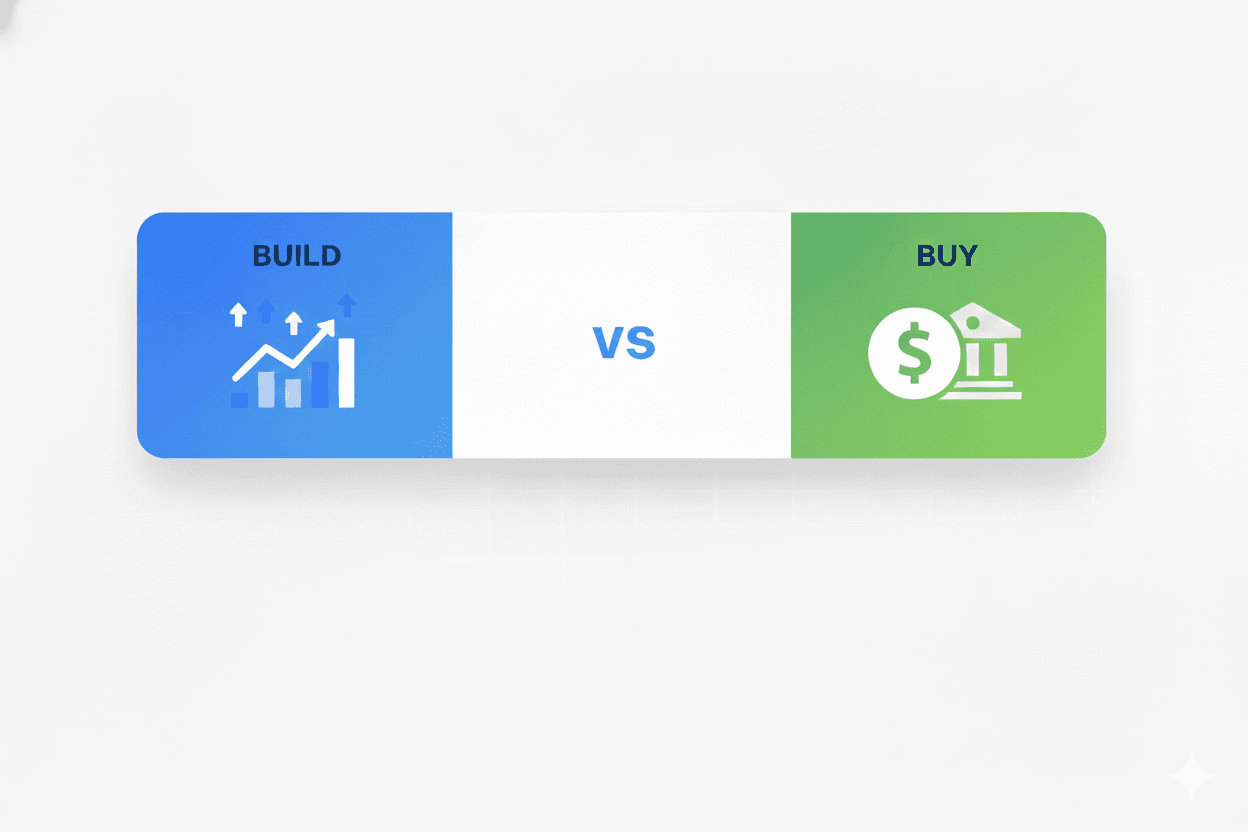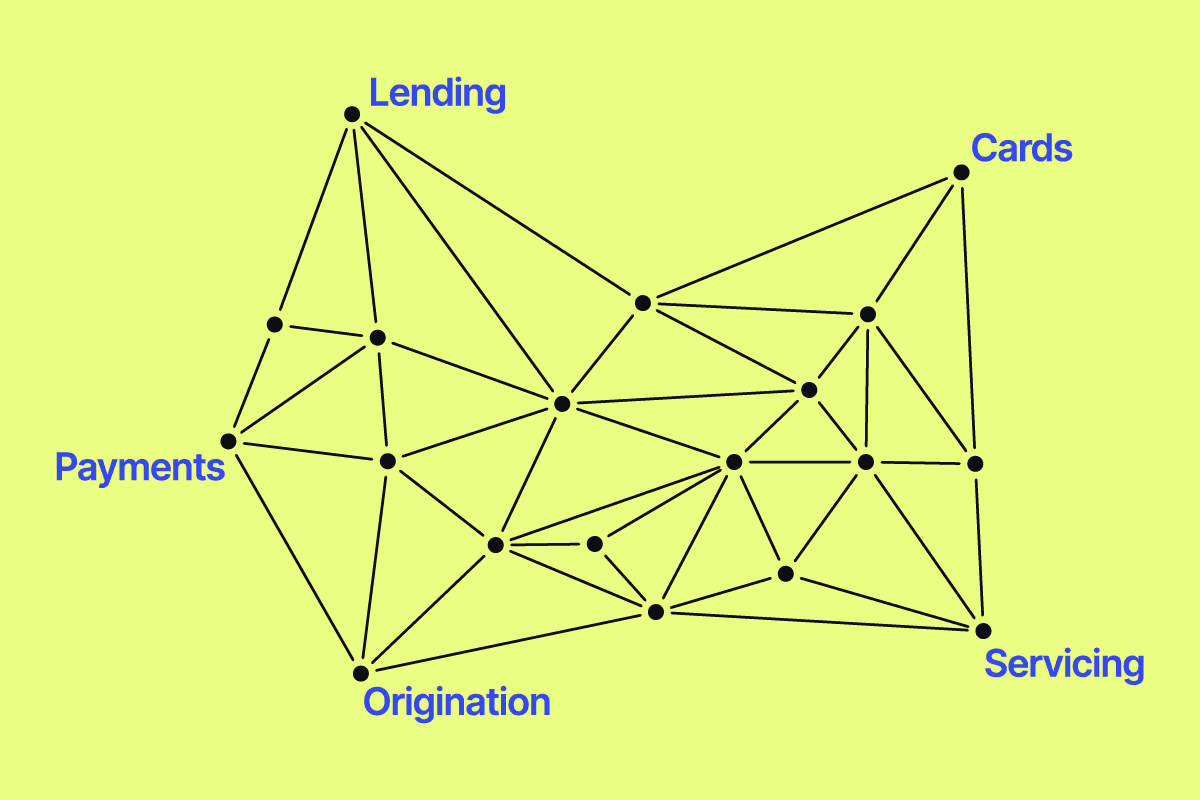The lifecycle of a loan is broken out into three main stages: origination, servicing, and payoff. While much attention is paid to the beginning of the loan process, many take for granted that the vast majority of touchpoints and problems come after the loan has been disbursed. Below, we’ll go through each step of the loan lifecycle process, broken down by before loan funding and after.

Stage 1: Loan origination. The first steps before the loan is funded.
The first stage in a typical loan lifecycle is the application, decision, and setup.
- Application: A potential customer finds a lender and applies for the loan. Many of these loan applications are done online and will have some screener questions to ensure that applicants are qualified before they apply. Some are still done in person, at a local bank or credit union branch, where a banker can help applicants figure out what they qualify for. At this stage, applicants will also verify their identity and go through Know Your Customer (KYC) and Anti-Money Laundering (AML) processes to ensure compliance with the Bank Secrecy Act (BSA).
- Information gathering: As part of the application, applicants must agree to a credit check and/or provide income, asset, and transaction verification to prove their ability to repay the loan. This can be provided through printed or PDF bank statements, but modern fintech solutions enable fast sharing of cash flow data through bank APIs that provide all the needed information in minutes rather than hours of printing and pouring over bank statements. Some businesses or consumers may need to provide additional information depending on industry or regulatory requirements.
- Underwriting: Once the credit report and bank account information (if applicable) are received, an underwriter evaluates the applicant’s ability to repay. For secured loans, this will involve assessing the value of the pledged collateral assets, such as equipment or real estate. Creditworthiness is determined based on the credit score and the applicant’s income, expenses, assets, and liabilities. If it’s determined that they can likely pay back the loan, it’s approved.
- Loan setup: Once approved, several pieces still need to be set up. First, all applicable documentation must be sent to the borrower, some of which may require a signature. Then, the lender will create an account in their system for the borrower. The borrower needs to be able to log in to this account to check their balance, upcoming payments, and payment history.
- Loan disbursement: Once the underwriting is approved and the loan account is set up, the lender sends the loan’s funds to the bank account provided by the borrower during the application process.
Once the loan is funded, lenders enter into the ‘servicing’ stage, which is comprised of payments, customer service, risk management, and more.

Stage 2: Loan servicing. Where most of a loan’s life is lived.
Loan servicing is everything that happens after origination. While origination is crucial to setting up a successful loan, a smart servicing program is needed to minimize risk and ensure loans are paid back on time. Servicing is comprised of the following:
- Payment processing: The primary function of servicing is collecting repayments on the loan according to the agreed-upon interest rates and timelines. Loan management and payment processing systems enable lenders to automate this process, with reminders sent to customers before each payment and auto-pay set up to ensure payments aren’t missed. If a payment is missed, these systems need to notify lenders so that they can take appropriate action.
- Customer service: Inquiries about the loan balance, payments, and changes to the account are bound to happen, so lenders need to have a customer service team in place to handle them. Much of this can be automated through website FAQs or even AI chatbots, but more complex issues will need human interaction.
- Compliance: Lenders must periodically send notices and perform audits to adhere to legal requirements such as the FCRA (Fair Credit Reporting Act). Loan management programs can help ensure that any upcoming requirements are flagged in the system.
- Technology’s role: While not a technical step in the loan process, technology plays a massive role in modern loan servicing. Online portals, mobile apps, automated emails, and other systems enable lenders to streamline servicing, keep customers informed, and scale their programs to more customers without manual systems slowing them down.
Canopy OS is an operating system for loan servicing where lenders can view, manage, and fine-tune all of their customer’s accounts. Lenders can set up customizable workflows to flag borrowers who need attention, even if they haven’t missed a payment yet. It enables ‘flexible servicing,’ where lenders can temporarily modify loan terms for customers facing short-term challenges, which increases their ability to repay loans over the long term. Lenders using Canopy for flexible servicing see an average repayment rate increase of 30%.
Secured vs. unsecured servicing: While most servicing is the same for secured and unsecured loans, secured loans require lenders to track collateralized assets. To ensure the viability of the loan, they need to track the asset’s valuation and the loan-to-value (LTV) ratio. Canopy enables lenders to manage both loan and collateral data in a single platform, making the servicing process simpler for secured loans. It can even track collateral valuation in real-time for assets that frequently vary in value, such as cryptocurrency and art.
Risk operations. Managing issues and protecting assets throughout stages one and two.
Risk presents itself throughout the lending process. While many fraudsters are weeded out early on during the KYC and AML checks in the application process, fraud is still a problem during servicing.
First-party fraud, where a customer commits fraud on their own account, can be done even by customers with good credit. Third-party fraud from account takeovers or stolen credit cards can also happen and must be planned for and mitigated against.
Risk operations stages throughout the loan lifecycle include:
- Fraud detection and prevention: For revolving credit or a credit card, risk teams watch for suspicious behaviors from accounts that might indicate fraud. For example, if purchases are being made in several locations around the country or if there are unusual online purchases outside of standard spending categories and amounts, the account can be flagged for suspicious activity, and spending can be frozen.
- Dispute resolution: Customers whose accounts are hacked and taken over by fraudsters or their credit cards stolen will submit purchase disputes and ask for chargebacks. Typically, a lender must determine if the merchant delivered the goods and whether they were up to expectations. Risk teams will analyze receipts and IP addresses, if possible, and decide within two billing cycles. If a customer wins a dispute, the lender may have to refund the purchases and take a loss.
- Complaint management: While not as serious as fraud, lenders may get customer complaints that can present risks to their company. For example, a late fee dispute may cause a customer to threaten to call the Consumer Financial Protection Bureau (CFPB) and file a complaint against the lender. There should be people and processes that resolve these complaints before something like that happens.

Stage 3: Loan payoff or recovery. The end of the loan.
The goal of any loan servicing program is to get the end of the loan successfully, with the loan repaid in full and interest collected over the loan’s full term. Of course, this doesn’t always happen, and loans can end in one of several ways:
- Normal payoff: All payments are complete, and the lender closes the account. This is the ideal way to end a loan, and a good loan servicing platform helps ensure that more loans end their life like this.
- Delinquency and collections: If an account isn’t paid, collections can start in as little as three days. Lenders will send a combination of phone calls, text messages, emails, and even push notifications to try to collect payment. If they use flexible servicing, the lender may offer a grace period if they believe it’s just a temporary setback impacting the borrower’s ability to repay.
- Charge-off and recovery: After several months of attempting to collect, the lender will consider the loan a charge-off and hire a third party to attempt to collect the remaining balance. Collections representatives speak as if they are collecting on behalf of the lender, but they actually work for a collections agency. Getting to this point will negatively impact a borrower’s credit score and limit future lending opportunities.
Canopy’s role in the lending lifecycle
While Canopy isn’t involved in the loan application or decisioning process, it’s set up to handle or assist with every other part of the loan lifecycle.
Processes that are entirely inside of Canopy’s scope include loan structuring, account and payment terms setup, payment processing, account information updates, fraud and dispute resolution, and restructuring loans to avoid delinquency.
Canopy can also assist with credit bureau disputes, compliant management, and managing borrowers who need debt relief or settlement.
Canopy is a flexible system that helps lenders with everything post-loan origination, including risk management. Beyond that, it integrates with origination and underwriting systems to create a complete system of record for your entire lending platform. Using Canopy Connect, you can build custom workflows to connect each piece of the loan lifecycle, creating an automated lending program that connects with everything you use and enables you to scale.





